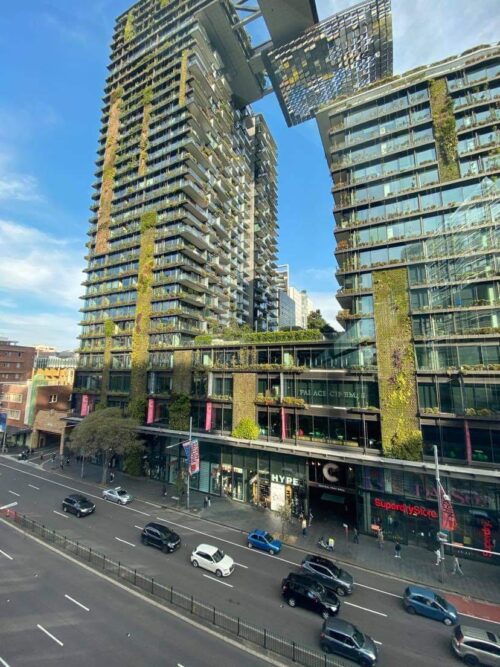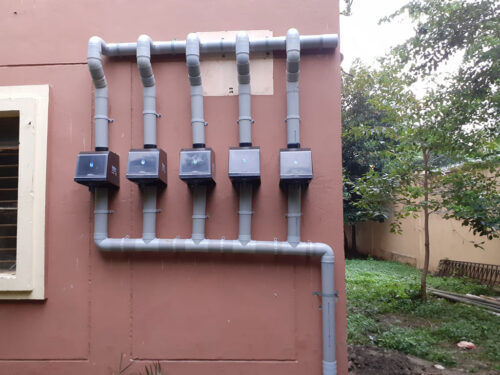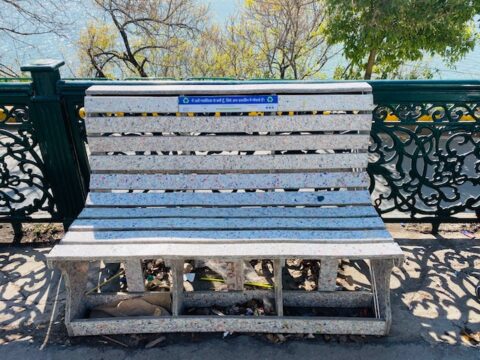(Author: Sunita Sujakhu, an Architect from Nepal and she completed her masters in property development and planning from UTS, Australia)
During my stay in Australia, there was an occurrence of bushfire. I was very shocked with the devastating situation caused by the bushfire. It began in September 2019 and by February 2020, more than 1 billion animals were killed, 33 people died, hectares of land burned down and many structures destroyed. I researched to understand the causes and impacts of bushfires in Australia.
According to the report by the Intergovernmental Panel on Climate Change (IPCC), Australia may experience climate change and may warm by 4℃ or more in this century. The sixth report published by the IPCC confirms that the climate change caused by humans may result in several climate extremes such as bushfires, drought and floods.
The global population growth and rapid urbanization, will further have an impact on environmental degradation which are further complicating existing challenges linked to climate change, global warming, pollution and thus increasing CO2 emissions.
The Construction of buildings uses most energy resources such as water, energy and different materials and it produces almost 40% of carbon emission. The residential sector in Australia is responsible for 12% of energy sources and 13% of emissions as per a research article published in 2017 by The Conversation. The causes were however, the rapid urbanization and urban activities which contributed to greenhouse gases emission as a result of high utility of resources and energy.
According to the UN, by the year 2050, 68% of the world population will live in cities across the world. The necessity to make any development sustainable in the context of Australia is more needed now than ever because climate change has been hitting Australia back to back in the past few years. Thus the concept of sustainable development has been raised so as to reduce uses of energy, improve environmental degradation and impacts and thereby improving the lifestyle and quality of urban living.
Australia has already predicted the role of sustainable development in terms of environment, social and economic aspects. Government is already driving towards policy, legislation and regulation for sustainable outcomes. Australia was represented and was actively involved in the discussion to design the 2030 Agenda for sustainable development. Government is also taking some steps for achieving sustainable goals.
For instance, in 2009 Australian greens announced a policy for sustainable planning and transport. And that policy includes; (a) national card for development targets and building standards (b) a sustainable fund and (c) national urban planning standards. A plan of growing Sydney was released in 2014 by the NSW department of planning and environment which focuses on planning including the ways to safeguard the natural environment. Similarly, the Victorian government released Plan Melbourne in 2014 and that plan vision included many other planning strategies and policies including the ways to address climate change.
What are Nature-Based Solutions (NBS)?
Nature-based solutions (NBS) as defined by International Union for Conservation of Nature (IUCN) are the actions taken to protect and restore ecosystems that address societal challenges effectively and adaptively, providing human well-being and biodiversity simultaneously. The concept of NBS was designed to bring locally adapted natural features in the development and planning to make it sustainable and to provide social, environmental and economic benefits. As per a UN survey, NBS can provide more than a third of the climate change mitigation.
As NBS find increasing attention with the planners and researchers gaining interest, there are many examples of NBS that have already been implemented in different areas. Firstly, the examples of NBS in terms of micro scale will be reviewed followed by the examples of NBS in terms of macro scale.
Defining NBS in terms of micro scale means the implementation of NBS within the precinct or development area. While the definition of NBS in terms of macro scale means the implementation of NBS within and more than the development area. The implementation can range from even small development areas, small localities to even suburbs.
Some examples of NBS in terms of micro scale are site orientation for the natural air flow and natural heating cooling, sun shading and shadowing, cross ventilation and open planning, use of recycled materials and renewable sources of energy, reuse and recycled water, building materials with low carbon emission and footprint.
Similarly, some of the examples of NBS in terms of macro scale are green infrastructure, green development, waste management planning approaches, energy efficiency planning approaches – 100% locally renewable energy, sustainable water management – water sensitive urban design (WSUD).
Case study: One Central Park
Case studies were reported as part of my Masters project, and I was very impressed with one of the developments, “One Central Park”. It is located in the heart of Sydney’s Central Business District (CBD). So, I had a chance to visit it and I was really amazed with the NBS in action.
One Central Park is located in Chippendale, Sydney, Australia. This development is one of the most renowned developments specially for its vertical garden and cantilever sky garden. One central park is one of Australia’s greenest and most self-sufficient mixed-used urban developments. Designed by an architect Jean Nouvel, the environmental sustainability features of this development is outstanding and has won several accolades.
Different NBS approaches implemented in the design and development of One Central Park results in several benefits. The vertical gardens in the buildings are also very efficient in helping in the energy consumption in both winter and summer. In winter, the plant foliage and vertical garden protect the building from cold while in the summer it provides a natural cooling system.
The Vertical garden also acts as a natural air purifier as the garden absorbs pollutants and other harmful particles in the air and gradually transforms them into fertilizers for plants.
There was a high usage of recycled materials within its development. Almost 90% of the demolished materials were recycled in the site and were utilized during construction. Recycled water was used for different purposes such as air conditioning, irrigation for vertical gardens and ease of maintenance.
Moreover, the concept of open planning and the direct cross ventilation naturally results in reduction in energy consumption making the building more energy efficient. Vertical garden itself helps in reduction of energy consumption as well as improving the quality of air within that vicinity.
Another NBS implemented was the projection of the roof with the installation of 40 sun tracking heliostats to maintain the thermal heat within the buildings. Sky garden was designed and shading was approached from plant foliage, green roofs and green walls.
Similarly, all the buildings within One Central Park are rated 5 out of 6 in green star rating. Developer and planner had a vision for greenhouse gas emission and the tri-generation system helps to prevent nearly 20,000 tons of greenhouse gas emission.
There is 80% reduction in greenhouse emission and 90% carbon neutrality with the regeneration energy system used in the development. The buildings achieve a 26% reduction in energy consumption compared to the average in other houses in New South Wales. The five-kilometer-long cantilever slab planter itself helps in 20% reduction in energy consumption by reducing the thermal impacts in the apartment.
Thus nature-based solutions can be integrated to enhance sustainability in cities. Some of the approaches are very simple and effective such as the use of vertical gardens, open planning and direct cross ventilation. Another interesting approach is recycling and reuse of building materials within the development period. The best solution to rebuild nature and to develop sustainable cities is nature’s principles itself.
Are you an ecopreneur? Are you using Nature based Solutions for green recovery? Share your green story!
Feature photo credit: Padip Rai





